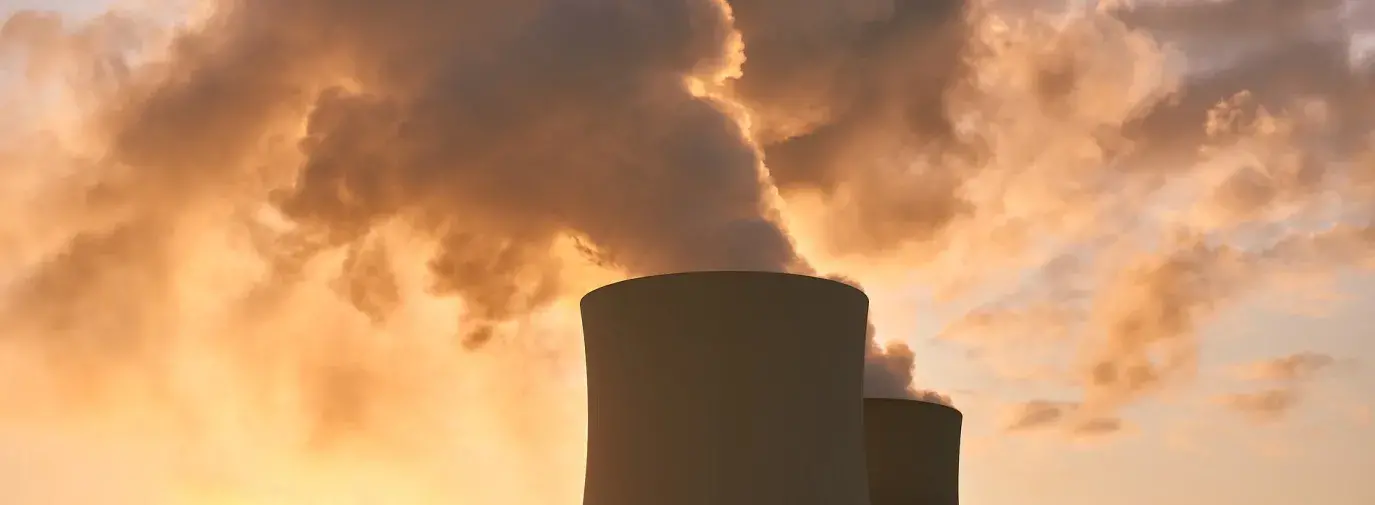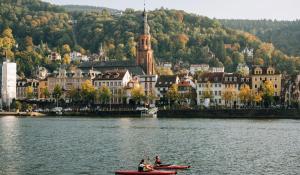
This piece first appeared on August 22, 2020 in the publication New Labor Forum.
The climate crisis is the greatest challenge facing the world today. The Intergovernmental Panel on Climate Change (IPCC) has warned us that to keep global warming to 1.5 degrees Celsius, we need to reduce emissions by 45 percent from 2010 levels by 2030 and reach net zero emissions by 2050. Proponents of nuclear power as a climate solution, including Gary S. Was and Todd R. Allen, authors of “The importance of nuclear energy in our future energy mix,” highlight the fact that nuclear reactors do not emit greenhouse gasses during operation while providing baseload generation. Nuclear, wind, and solar power all have significant and comparably lower lifecycle greenhouse gas (GHG) emissions than coal and natural gas plants.[i] However, the proponents of nuclear power, such as Was and Allen, and billionaire Bill Gates, are overlooking the significant risks inherent in the technology and the fact that scaling up nuclear power would take too long and is too costly to be an effective climate solution.
Instead, we need to scale up renewable energy technologies like wind and solar to increase zero-carbon generation, while accelerating energy efficiency and storage technologies nationwide. Together, these solutions will provide consistent power and address baseload capacity traditionally provided by coal and nuclear plants.
Nuclear Power is Inherently Risky
Was and Allen argue that nuclear power is safe, and even good for your health. However, the significant risks inherent in nuclear power are well-documented, understood by the general public who are justifiably wary of the technology, and can be avoided by shifting power generation rapidly to renewable energy instead.
The Intergovernmental Panel on Climate Change (IPCC) summarizes the risks of nuclear power well: ‘‘Barriers to and risks associated with an increasing use of nuclear energy include operational risks and the associated safety concerns, uranium mining risks, financial and regulatory risks, unresolved waste management issues, nuclear weapons proliferation concerns, and adverse public opinion.’’[ii] Collectively these risks make nuclear power a non-starter for addressing climate change.
Nuclear power plants rely on radioactive uranium for fuel. Uranium mining is inherently risky and produces radon emissions and soil and water pollution. Uranium mining frequently occurs in areas where Indigenous peoples live and in sensitive ecological areas. The largest release of radioactive materials in U.S. history occurred in the Church Rock mines in New Mexico in 1979. Over 1,100 tons of solid radioactive mill waste and 93 millions of gallons of radioactive tailings contaminated 80 miles of riverbed of the Puerco River, deeply impacting the Navajo Nation.[iii] Despite this history, the Trump Administration is currently working to expand the mining of uranium, potentially putting the Grand Canyon and American Indian tribes at great risk.
Nuclear power plants pose potentially catastrophic risks during operation. The accidents and catastrophes at Three Mile Island, Chernobyl, and Fukushima highlight the inherent risks of nuclear power, and scientists have estimated the likelihood of another Fukushima-like event to be 50 percent within 60-150 years, with smaller accidents occurring every year.[iv] In The U.S., the current fleet of reactors is aging, and the Nuclear Regulatory Commission (NRC) is often extending the licenses of plants for an additional 20 years, even though an extensive report by the Associated Press of NRC records found that the agency colludes with industry to weaken regulations and ignore significant risks from cracked concrete, leaking valves, and corrosion at aging plants.[v]
Spent nuclear fuel poses a long-term risk as well. Some of this waste can remain radioactive for tens of thousands of years, posing risks to future generations, including risks of weaponization and proliferation. The common consensus is that nuclear waste is most safely stored in deep geological burials, but no country has yet done this for civilian reactor waste. In the United States, the proposed Yucca Mountain repository has been actively opposed by residents and legislators from Nevada and delayed for years, and the Trump Administration is now opposed to it, resulting in ongoing riskier temporary storage in 35 states nationwide.
As a result of these risks, nuclear power faces significant opposition from the U.S. public, while renewable energy is widely supported, which makes the path forward for renewables much easier. Opinion polls demonstrate that 51 percent of the public opposes nuclear power, with 21 percent strongly opposing it,[vi] compared to 92 percent support for solar and 85 percent for wind.[vii]
Nuclear Power is Too Expensive and Too Slow to Scale
Was and Allen argue that nuclear power is the most reliable and cost-effective source of baseload generation. They are ignoring the major delays and cost overruns of nuclear power plant construction in the United States and abroad that make it clear that scaling up nuclear power to address the climate crisis is simply not cost effective or timely.
In the mid-2000s, as United States utilities planned to construct new nuclear power plants, construction costs were already soaring to $5,500 to $8,500/Kw or $6-$9 billion per unit.[viii]
The actual cost of construction is even higher. Two nuclear plants were pursued in South Carolina and two in Georgia, each utilizing the Westinghouse AP1000 design. The South Carolina plants were abandoned due to construction delays and cost overruns, and are the subject of a U.S. Securities and Exchange Commission lawsuit alleging investors were defrauded after $9 billion was spent.[ix] The Georgia plants are still under construction, but five years behind schedule, and experiencing significant cost overruns. Originally budgeted at $14 billion, they are now projected to cost over $28 billion.[x]
Delays and cost overruns are not limited to plants in the U.S. alone. Several nuclear reactors are years behind schedule in Europe as well, including the Hinckey Point-C plant in the UK, a plant in Flamanville France that is eight years behind schedule, and the Olkiluoto lll plant in Finland, which is 11 years behind schedule.[xi] Extensive delays have resulted in significant cost overruns throughout the history of nuclear plants worldwide, on average nearly 20 percent.[xii] Significantly, the construction of nuclear power plants today costs 60 percent more than earlier generations of reactors,[xiii] at a time when the cost of wind and solar technologies are rapidly declining.
Proponents of nuclear power state that advanced reactors, including new, smaller modular reactors, will solve the cost issues, since they can be built in factories and do not require the same active safety systems as current reactors. But modular reactors are not ready for construction, their safety systems are not foolproof, and they will need substantial government subsidies.
The Secretary of Energy Advisory Board concluded in 2016, “there is no shortcut to reestablish a vigorous U.S. nuclear power initiative that could be a major source of carbon-free generation”, and found that new technologies could take 25 years and nearly $12 billion to develop.”[xiv] Notably, the commission was looking at “the capability to deploy new nuclear power plants at scale, at the rate of 3 to 5 gigawatts electric (GWe) per year, in the time period 2030–2050.” That extended time frame means nuclear power will not be able to scale up rapidly enough to help us avoid the worst impacts of climate change.
Efficiency and Renewables are the Way Forward
Pursuing new current-generation nuclear plants or advanced nuclear energy technology is a dead-end, and more importantly, would take resources away from scaling up the proven technologies of solar, wind, storage, and energy efficiency that are already paving the way to zero-emitting energy generation. As we scale renewables up, we can retire coal, natural gas, and nuclear plants.
As the IPCC states, in its special report on climate: “The political, economic, social and technical feasibility of solar energy, wind energy and electricity storage technologies has improved dramatically over the past few years, while that of nuclear energy and carbon dioxide capture and storage (CCS) in the electricity sector have not shown similar improvements.”[xv]
The IPCC is understating the case for renewables. Moving to 100 percent renewable energy worldwide is entirely possible. Researchers at Stanford University mapped a transition to 80 percent renewables (wind, hydro, geothermal, and solar) by 2030 and 100 percent by 2050 for 139 countries worldwide. The transition is technically and economically feasible, would meet the goal of keeping global warming to 1.5 degrees Celsius, would require no new hydropower, and would create 24 million net new jobs worldwide. It would also require a maximum of only .22 percent of new land across the countries, with significant solar going on rooftops and onshore wind integrating with other land uses.[xvi]
In the United States, as the cost of wind and solar energy plummeted, electricity from renewable energy doubled between 2008 and 2019, with 90 percent of new renewable capacity coming from wind and solar. [xvii] Renewable energy now provides nearly 20 percent of U.S. energy generation,[xviii] generated more power than coal in April 2020,[xix] and is rapidly increasing to 76 percent of new energy generation in the U.S. as utilities choose renewables solely based on cost.[xx]
To ensure wind and solar can provide consistent power and meet baseload generation as fossil fuels and nuclear plants phase down, energy storage technologies and installations are proliferating. Two new projects demonstrate the potential. Southern California Edison will bring 770 MW of battery storage facilities online in California in 2021, and a 409 MW storage facility will go online in 2021 in Florida as well.[xxi] A typical coal-fired power plant generates 600 MW, so these storage facilities are game changers.
And, to reduce the need for baseload power, the United States could gain considerably from increases in energy efficiency. A McKinsey and Company report found that fully deploying residential, commercial, and industrial energy efficiency measures in the United States could cut energy use by 23 percent nationwide and save $1 trillion.[xxii]
Renewable energy and energy efficiency are also major job creators. As of 2019, nearly 350,000 Americans were employed in solar energy, nearly 115,000 in wind, and 84,000 in storage, compared to 61,000 in nuclear. There are already nearly 2.4 million jobs in energy efficiency as well. Notably, until the novel coronavirus outbreak, wind, solar, storage, and energy efficiency jobs were increasing, while nuclear experienced job losses.[xxiii]
We don’t have time to lose. With the novel caronavirus wreaking havoc on the broader economy, and at least 35 million jobs lost, including tens of thousands of clean energy jobs, now is the time for the federal government to fully invest in a Green New Deal, and keep truly clean energy growing. Doing so would create several million green jobs, including in the growing renewable energy, storage, and energy efficiency sectors. It would also put the U.S. on a pathway to 80 percent renewables by 2030 and 100 percent by 2050, helping ensure our country is doing its part to keep global warming to 1.5 degrees Celsius or less
Please also see Green America's 10 Reasons to Oppose Nuclear Power.
[i] “Life Cycle Greenhouse Gas Emissions from Electricity Generation,” National Renewable Energy Laboratory, 2013, https://www.nrel.gov/docs/fy13osti/57187.pdf
[ii] Intergovernmental Panel on Climate Change (IPCC), T. Bruckner et al. “Energy Systems” in Climate Change 2014: Mitigation of Climate Change. Contribution of Working Group III to the Fifth Assessment Report of the Intergovernmental Panel on Climate Change (2014); O. Edenhofer et al., eds., Cambridge University Press, 70, 517.
[iii] Marley Shebala, “Poison in the earth: 1979 Church Rock spill a symbol for uranium dangers,” Navajo Times, July 23, 2009.
[iv] Spencer Wheatley et al. “Reassessing the safety of nuclear power.” Energy Research & Social Science Vol. 15 (May 2016): 99.
[v] Jeff Donn, “US Nuke Regulators Weaken Safety Rules,” Associated Press, June 20, 2011.
[vi] “US public opinion evenly split on nuclear,” World Nuclear News, April 1, 2019.
[vii] John Weaver, “92% of Americans want moAR solar power, greater than any other action Pew Research says,” PV Magazine, November 26, 2019.
[viii] David Schlissel and Bruce Biewald, “Nuclear Power Plant Construction Costs,” Synapse Energy Economics, July 2008: 2.
[ix] Andrew Brown, “Dominion close to settling case with securities regulators over SC nuclear project,” The Post and Courier, May 8, 2020.
[x] Sara Barczak “Plant Vogtle Expansion in the Spotlight: billion$ more at risk,” Clean-Energy.org (blog), November 8, 2019, https://cleanenergy.org/blog/plant-vogtle-expansion-in-the-spotlight-billion-more-at-risk/
[xi] Peter Reina, “New Delays Hit Europe's Nuclear Power Projects” Energy News-Record, September 27, 2019.
[xii] “Construction delays make new nuclear power plants costlier than ever,” ScienceDaily, May 29, 2018. https://www.sciencedaily.com/releases/2018/05/180529132032.htm
[xiii] J. Portugal-Pereiraab, P. Ferreirac, J.Cunhac, A. Szkloa, R.Schaeffera, M.Araújoc “Better late than never, but never late is better: Risk assessment of nuclear power construction projects,” Energy Policy 120, (September 2018): 158-166.
[xiv] U.S. Department of Energy, Secretary of Energy Advisory Board Report of the Task Force on the Future of Nuclear Power, (Washington D.C. September 22, 2016): 1.
[xv] Intergovernmental Panel on Climate Change (IPCC), H. de Coninck et al.: “Strengthening and Implementing the Global Response” in Global Warming of 1.5°C. An IPCC Special (2018Chapter 4, 315.
[xvi] Mark Z. Jacobson et al. “100% Clean and Renewable Wind, Water, and Sunlight All-Sector Energy Roadmaps for 139 Countries of the World.” Joule 1 (2017): 108–121.
[xvii] Cara Marcy, “U.S. renewable electricity generation has doubled since 2008,” Today in Energy, U.S. Energy Information Administration (blog), March 19, 2019.
[xviii] Ibid.
[xix] Jason Murdock, America’s Renewable Energy Sources Have Produced More Electricity Than Coal Every Day for 40 Days Straight,” Newsweek, May 5, 2020.
[xx] Silvio Marcacci, “Renewable Energy Prices Hit Record Lows: How Can Utilities Benefit From Unstoppable Solar And Wind?,” Forbes, Jan 21, 2020.
[xxi] Dan Gearino, “A California Utility Announces 770 Megawatts of Battery Storage. That’s a Lot,” Inside Climate News, May 7, 2020. https://insideclimatenews.org/news/06052020/inside-clean-energy-california-battery-storage-wind-solar?utm_campaign=Hot%20News&utm_medium=email&_hsmi=87627311&_hsenc=p2ANqtz-8eckNxrUXvLKd60EU5bhjoF5DLar6nIMbjunceA5q67l-wBCYOCnUXz20aJOu8QmLmErqN&utm_content=87627311&utm_source=hs_email
[xxii] Jon Creyts, Hannah Choi Granade, and Kenneth J. Ostrowski, “US energy savings: Opportunities and challenges,” McKinsey & Company Website, January 1, 2010. .
[xxiii] National Association of State Energy Officials and Energy Futures Initiative, 2020 U.S. Energy &
Employment Report: 56,60,75,121,124.






